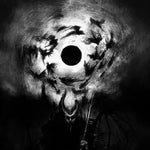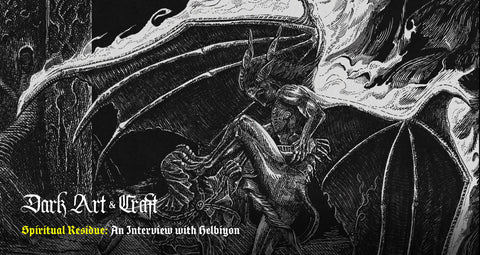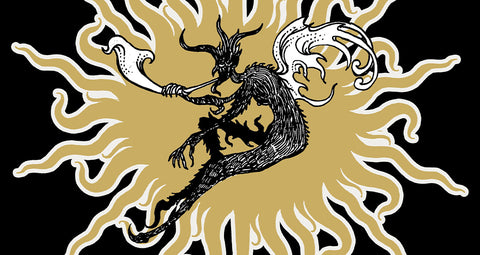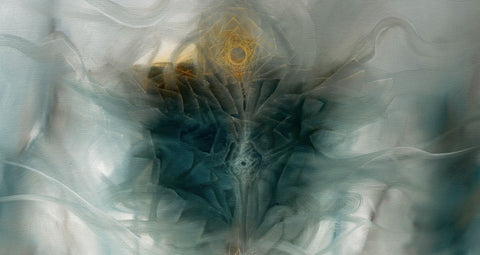
Greetings, today we have a unique long format interview Part Three; the final edition of a series with Portuguese Ink Artist Pedro De Kastro. In his relentless pursuit of detail, De Kastro wields pencil, China ink, and metal engraving like instruments of alchemy, transmuting light and shadow into haunting, hyper-detailed visions. Below is our conversation with the Artist.
DA&C: When it comes to your creative process, what tools or mediums do you gravitate toward to bring your visions to life?
In 1981, at the age of Nine, my parents gave me a Rotring drawing set with three refillable china ink pens, each one with black ink and a different point measure. All of them were extremely thin (0.13mm - specially this one, thin as hair, 0.18mm and 0.25mm). Those first ink pens and drawing with them, blew my mind away. Also at that time, I was already devouring Franco-Belgian comics by renowned authors such as Moebius, Hergé and Edgar P. Jacobs. I then discovered in a supermarket "The Carnival of Immortals", by Enki Bilal, a disciple of Moebius. It was an amazing dark science-fiction graphic novel set in the post-atomic war Paris of 2023. That story truly affected me. I must emphasize that it was Bilal's magnificent and purely dark/dystopic work, one of those who had the greatest impact (along with Piranesi) on my style and the dystopian atmospheres of my pen and ink drawings, forever. From then until now, I love to draw with china ink pens and create all those insane and post-apocalyptic renderings dominated by the white/light - black/shadow contrasts. The Far Future and the Post-Apocalypse have always fascinated me more than anything else.
"I love to draw with china ink pens and create all those insane and post-apocalyptic renderings dominated by the white/light - black/shadow contrasts. The Far Future and the Post-Apocalypse have always fascinated me more than anything else."
THE AVENUE II, DETAIL-3, 2007 Prints Available on Dark Art & Craft

THE REDEEMER Pedro De Kastro print on Dark Art & Craft
"I try to execute my drawings' lines with the minutia of a watchmaker."
Fueled by my eco-sociological concerns, everything more or less starts in my imagination or in my hallucinating dreams/hellish nightmares. Contrary to imaginary visions of the conscious state which are a main inspiring source to my dark art, my dreams are not voluntary. They restrict themselves to invade my sleepy spirit and take me to worlds of pure fancy. Or nightmare. As most of them are. Never do those nightmares anesthetize my creative process. Much to the contrary, the hellish dreams bring me images, and consequently, inspire me more than any other source. The more anguishing the nightmares, the greater the visual impact of the drawings become. My hand just follows and my obsessed-like hachures and renderings do the rest. In the beginning, I have a main concept in mind, but I already know that it will suffer several transformations/developments throughout the creation process, which resides in two main phases: The first is the creation of the composition of the darkscape. I draw in pencil a first sketch of the central element and then, around it, I develop several elements that will remain in the final art. Many unexpected ideas turn definitive, seeing the day-light in this phase of the process. At the end I have dozens of pencil sketches/ideas spread by all the surface of the wide paper. Then I use the white plastic eraser (from a normal size to 2.3 mm) to remove rough construction lines from abandoned ideas, leaving only the selected ones. Now I start the second main phase: the execution with the china inking. Over the selected pencil lines, I ink with the thin china ink pen making the delineations, tracing the outlines. When the delineation process is finished, I only have to know where the light comes from. Usually, I make the light come from the right or from beneath. This last option makes everything much more tragic, hellish, sublime as well as with much more drama/dooming fate. I like that. Inside the forms I ink directly many lines cross-hatched, with no pencil sketch. I do it quickly once I have the gesture automated in the hand. In my practice in the execution of the perspective and dark and light, I try to execute my drawings' lines with the minutia of a watchmaker.
THE REDEEMER Pedro De Kastro print on Dark Art & Craft
My chiaroscuro technique exaggerates "the monumental qualities of structures. A very layered space in which bright objects in the distance are pushing dark objects in the foreground out towards the viewer." In the black inking process, I ink first those dark forms near us which have lots and lots of thick black lines cross-hatched. The bigger the distance from us, towards the horizon, thinner and lesser the black lines will be. When I want to give the idea of full light, I just leave the white paper untouched. At the end of every piece, I erase the white parts again, to clean the pencil dust in them and increase the light. Since my art is monochromatic, the contrast between light and shadow is essential. The black needs to be well contrasted with the white, and vice versa to make it stand out and have much more visual impact in the final result. People think that all the time I spend in one drawing is fulfilled with the China-inking but it is only 50% of it. Sometimes, even less. Creating the composition through penciling is the other crucial first half.

My biggest problem in creating my darkscapes is the time factor. I don’t have a method or a time discipline. From Sunday to Sunday, I draw for hours and hours but I take breaks many, many times. Due to my cursing ADHD, I have to stop a lot of my creating/execution process for long minutes, because it's very monotonous and requires lots of patience - and focus. I don’t have patience to continue it and my brain must, needs to be recharged in order to guarantee the quality as well the steadiness of the of the line/hachure. Also, because of this, I never work on a single drawing straight to the end. I always have to develop two or three darkscapes/dreamscapes at the same time to break the creation's routine. While one drawing may already be in the final ink phase, I can interrupt it and develop another in the pencil phase at the same time. Just to keep my sanity. Or what's left of it. I have to be extremely focused when I do my renderings and when I start to lose my focus in the drawing, I stop immediately in order to maintain its quality. This is crucial to me. I spend weeks or months on a drawing depending on its size, complexity of the composition, and perspective. And since my two traumas in my right eye, with my new prism glasses and my forehead magnifying lenses, I've become even more obsessed with the perfection factor of the end result. I love to give the impression that my imagined Far Future has already happened like a memory lost in the End of Time. I like to think that the monochromatic media I use further heighten the power of the pieces by giving them a sense that they are remembered scenes, rather than imagined scenes. I’m always remembering my imaginary visions merged in the last age and trying to give to my pen and ink drawings the same nostalgic ambience given by the fantastic renderings of engraving old masters Piranesi and Doré.
THE HARP, 1996 - REVISITED DEATHSCAPE 2025 - Metal engraving on paper - etching - 50 x 60 cm - Death Series
When I take a known urban landscape from the present day and metamorphose it in a post-apocalyptic darkscape merged in a faraway future, I travel to that tragic time. There you will collide into the World's powerful and epic man-made icons, deeply embedded in our collective memory like the Chrysler Building in New York, the Golden Gate Bridge in San Francisco or the Arch of Triumph in Paris, among so many others, reshaped in a devastated scenery shattered by Time, Climate Change and Nuclear Holocaust, where our Imagination travels without limits, transforming our reality into another one much frightening, worse and possible. But also strangely nostalgic, beautifully sinister... and hopefully avoidable. In that tenebrous world, I think in the dangerous path, a very dangerous one, that Humankind is taking. I have a strange obsession with drawing the destructive power that seems to come from deep inside the earth with all those insanely detailed metallic ducts that entwine around the aged World icons. The irony is that those suffocating rusted roots are formed by the remaining and scattered elements of a lost technology, made by humans in a lost past. It's as if Mother Earth, Nature, the environment itself, through their merciless four elements, were striking back against Humanity, taking revenge for all the aggressions caused by Man. What causes the doom of Man is generated by himself.

DAY OF WRATH (DIES IRAE), 1999 - Pen and Ink - 23cm x 32xm - Apocalypse Series
For artists working with dark themes today, what wisdom would you offer to help guide their path if any?
Be persistent, never quit, but realize that you have a long journey ahead. You'll have to make a lot of sacrifices, because if it's hard enough for a "normal" artist to make a living from his art, to get a gallery, an audience, collectors, it's even harder for a dark artist. Not everyone or every gallery wants to have one or more nightmares, hells or apocalypses on their walls. But there is certainly a market for dark art. Look how far Giger has come. And other great dark artists too.
"Be bold and a believer in your dark art/ enlightened soul. Believe in your dreams (or nightmares), but the best way to make your dreams come true is to wake up. And beware with the Dark Side."

The Artist, Pedro De Kastro at H.R. Giger's Grave, 2018
...
The End







